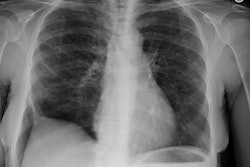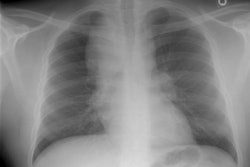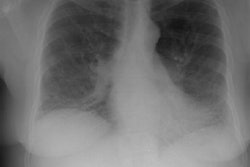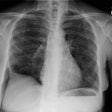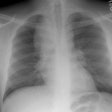AJR Am J Roentgenol 2001 May;176(5):1287-1294
CT Features of Pulmonary Alveolar Proteinosis.
Holbert JM, Costello P, Li W, Hoffman RM, Rogers RM.
OBJECTIVE. This investigation describes the CT features of pulmonary alveolar proteinosis
in a large group of patients. MATERIALS AND METHODS. A retrospective review of 139 chest
CT scans (79 thick-section scans and 60 thin-section scans) from 27 patients with
pathologically proven pulmonary alveolar proteinosis was performed. Two independent
observers assessed the intraslice patterns and zonal distribution of disease on three CT
images of each lung. The observers also graded the percentage of ground-glass opacities,
air-space opacities, fibrosis, interlobular opacities, intralobular opacities, and
emphysema in each slice. CT scans obtained before and after lavage related to 12
whole-lung lavage treatments on nine patients were evaluated. RESULTS. The dominant
intraslice pattern was geographic, but a diffuse pattern was sometimes seen. The most
common zonal pattern was uniform; a lower zone predominance was next most frequent.
Ground-glass, air-space, and fibrotic opacities had a generally homogeneous craniocaudal
distribution, but there was a trend toward more interlobular opacities at the lung bases
(p < 0.002). Ground-glass opacities were seen on at least one scan in 100% of the
patients. Interlobular opacities (85%), air-space opacities (78%), substantial fibrosis
(7%), and intralobular opacities (7%) occurred less frequently. Compared with
thick-section images, thin-section images showed more interlobular opacities, but no
difference in ground-glass, air-space, or fibrotic disease. The proportion of lung
affected by ground-glass and interlobular opacities decreased significantly (p < 0.05)
after lavage. CONCLUSION. Pulmonary alveolar proteinosis does not present only with
alveolar disease. The CT appearance typically combines different types of opacities with a
geographic pattern and a uniform zonal distribution with variation over time.
PMID: 11312196
